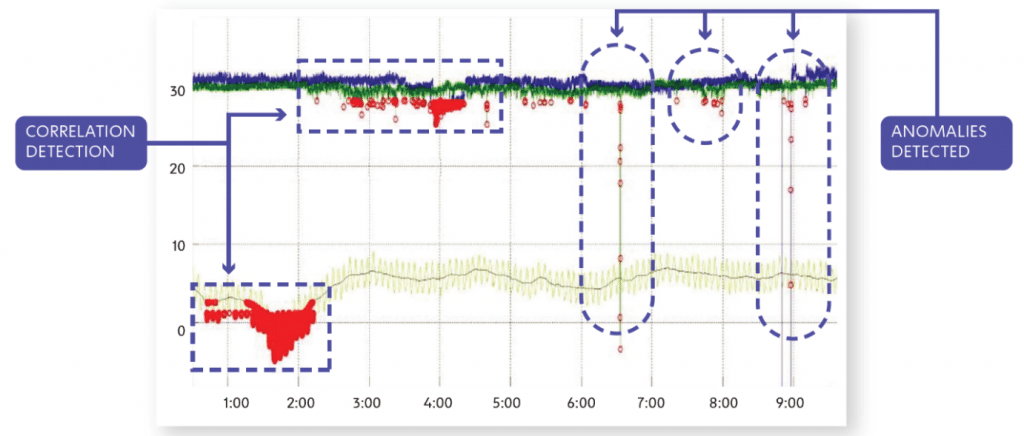By Brian Rosenzweig, Director, Presenso
The dawn of Industrial IoT (IIoT) and Digitalization brings innovation to the field of operations and maintenance (O&M) with significance to an industrial plant’s financial statements. This article explores how the adoption of IIoT for Predictive Asset Maintenance is likely to change the maintenance discipline and the implications relevant to finance professionals.
Background: How IIoT Predictive Maintenance is Changing the Industrial Landscape
How does IIoT Predictive Maintenance work? Artificial Intelligence algorithms are applied to big data generated by industrial plants to detect anomalous sensor behavior, thereby providing warning of machine degradation or evolving asset failure. Industrial plants can pinpoint the cause of failure and remediate before the occurrence of production line breakdown or plant standstill, thereby improving uptime and increasing revenue.
Although many plants are struggling with their Industry 4.0 roadmap and there is still confusion about IIoT platform standards, new Predictive Maintenance technologies are already impacting the industrial domain.
 Improving P&L Performance
Improving P&L Performance
The primary goal for IIoT is to address a cost that directly impacts the bottom line: unscheduled asset downtime which costs the global processing industry $20 billion a year. True downtime cost is an aggregation of lost revenue, labour and the cost of excess capacity.
Revenue: In process industries such as oil & gas industries, improvements in plant yield rates have a material impact on the top line growth.
Labour Costs: When machinery comes to a standstill, laborers are forced to wait until repairs are made. What is often overlooked is the inefficient nature of maintenance during unscheduled downtime.
Excess Capacity: Production plants carry excess capacity in case of sudden increases in demand. The cost of excess capacity needed in case of unscheduled downtime is added to the true downtime cost.
Balance Sheet Improvements: From Capex to Opex
There are two ways that IIoT for Predictive Asset Maintenance can positively impact the balance sheet. First, by improving the performance of a machine asset extends the life of the asset. With IIoT Predictive Maintenance, the production plant is alerted to evolving failure and can remediate the problem before it occurs.
The second way in which IIoT Predictive Maintenance can improve balance sheet is the trend toward Hardware as a Service or HaaS. Although still in its nascency, machinery OEMs (the plant vendors) can add Big Data analytics to their product offerings and sell their hardware as a service, thereby creating new business models. HaaS resembles the Software as a Service (SaaS) subscription model, which shifts asset expenditures from Capex to Opex. In this way, vendors “lease” the assets to the production plant operators, and these assets and associated liabilities can be removed from the balance sheet.
Insurance Premiums
A further benefit from improved O&M performance is lower insurance rates. A paper delivered at First World Congress on Engineering Asset Management (WCEAM) explains that premiums Boiler and Maintenance Insurance (BM) and Business Interruption Insurance (BI) can be affected by a company’s asset maintenance. The “insurance industry is vitally interested in technologies which reduce the risk interruption to plant and processes.”
Although premiums will not change overnight, if the shift towards to IIoT Predictive Maintenance improved asset failure rates, this is likely to impact risk profiling and the cost of capital.
Reporting Accuracy
Today CFO’s struggle to gain access to relevant and real-time operational data from production plant. Industry experts Dave Crumrine and Doug Post claim that 80% of Downtime at a plant level is not measured with accuracy. Furthermore, in many instances, downtime is underestimated by 200-300%. Although CFO’s are involved with decisions relating to the purchase of plant machinery, they lack impartial information about the health of these assets.
With the ability to aggregate sensor data from multiple production plants, IIoT Predictive Maintenance solutions can deliver updated information on the performance of a portfolio of machinery assets. Today, CFOs can access dashboards to get insights into plant assets bypassing organisational filtering.
Photo by Lorenzo Cafaro from Pexels https://www.pexels.com/photo/black-and-white-business-chart-computer-241544/


Be the first to comment on "What every CFO should know about IIoT Predictive Maintenance"